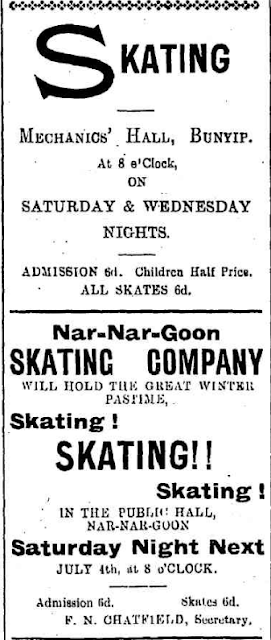Armistice celebration
Victory picnic by Iona and Cora Lynn Combined
The Committee of the 'Victory' picnic which was held on the 4th inst were fortunate as far as weather conditions were concerned and the ground selected - Robinson's Hill - was an ideal camping place.
The procession left the Iona State School about 12 noon, and the many various costumes were both artistic and original. Mr J. Donald, well mounted, acted as marshal and kept the procession well up to time. Mr G. Osborn, head teacher Cora Lynn, had charge of the children, and the manner in which he handled them was the subject of favourable comment. The Iona Brass Band, under the baton of Mr W. Legge had the pride of place and was followed by Mr D. Donald, a returned soldier, carrying the Flag. Then came 12 returned soldiers in uniform, followed by various dressed groups and beautifully decorated vehicles, the procession being over a mile long.
 Immediately on arrival at the grounds the judging was completed and the results announced, after which the vast crowds formed themselves into picnic groups, and those who failed to fetch hampers were quickly supplied with edibles. The following gentlemen worked hard to make the gathering a success - Crs Cunningham, Walsh, Dowd, Messrs Donald, Dessent, Holian, Quigley, Reidy, Pitt and others.
Immediately on arrival at the grounds the judging was completed and the results announced, after which the vast crowds formed themselves into picnic groups, and those who failed to fetch hampers were quickly supplied with edibles. The following gentlemen worked hard to make the gathering a success - Crs Cunningham, Walsh, Dowd, Messrs Donald, Dessent, Holian, Quigley, Reidy, Pitt and others.
Subjoined are the results: -
Best dressed vehicle - C.Pitt - 1 Red Indian - Alan Murdoch 1
Purple Cross - Nellie Bellman and Mary Fitzgerald 1 and 2
Sundowner - Harry Schmutter
Milkmaids - Annie Leithead and Dolly Pitt 1 and 2
Red Cross nurses - Jean Murdoch and Ada Dessent
Japanese lady - Phyllis Winter
Newspaper boy - Billie Blake
Silver starch - Lily Murdoch
Dunces - Hazel Pitt and Rose Leithead
Salesgirls - Mary Stewart and Nellie Taylor
Ruination - Alice Burleigh
Peanuts - May Taylor
Fancy dressed bicycle - M. Fitzgerald
Boys Siamese race - M. and J. Cunningham, T.Taylor and D. Dowd 2
Girls Siamese race - B. Cunningham and Irene Hart 1
Married men's race - W. Hart 1, P. Cunningham 2
The school's relay race caused some excitement; 4 schools of 8 boys each competed and the event was won by the Iona Convent school, with the Cora Lynn Convent school second.
Tug of war - Iona schools combined defeated Cora Lynn schools combined.
Cutting of the Kaiser's head caused a lot of amusement, and a number of boys and girls races were also keenly competed.






































